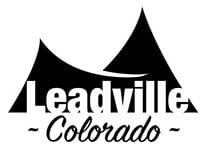One of the most vital places in Colorado Springs is the area between Colorado College on the north and downtown Colorado Springs on the south. It is filled with a multitude of human activities, all happily jumbled together. There are homes, apartments, churches, museums, office buildings, banks, small restaurants, and stores.
The main north-south streets through this exciting area are NorthCascade Avenue, North Tejon Street, North Nevada Avenue, North Weber Street, and North Wahsatch Avenue. Important east-west streets include Monument, Williamette, St, Vrain, and Boulder streets. Businesses and stores are more likely to be found on the north-south streets. Private residences and apartments, and there are many, tend to cluster along the east-west streets.
The people who have their homes in this “not-quite-downtown” area call it the Near North End. Firmly planted south of Colorado College, they differentiate themselves from the Old North End, the almost all-residential neighborhood to the north of Colorado College. They have a homeowner’s association, just like the folks in more conventional neighborhoods elsewhere in the city and out in the suburbs.
This is where modern office buildings and fashionable shops with neon signs share a city block with some of the most historic structures in Colorado Springs. A number of large mansions, dating to the Cripple Creek and Victor gold boom, line N. Cascade Avenue. Most have been broken up into individual apartments or offices, but with the historic exterior of the building remaining basically unchanged.
These brick rowhouses are typically found in East Coast cities such as New York and Baltimore — not in a western city such as Colorado Springs. But here they are on N. Tejon Street at E. Monument Street, another example of the wide variety of architectural styles found in the Near North End between Colorado College and downtown Colorado Springs.
The Near North End has some of the oldest and most historic churches in Colorado Springs, such as the First Congregational Church at St. Vrain and N. Tejon, Grace Episcopal Church at Monument and Tejon, and First United Methodist Church at Nevada Avenue and Boulder. But the Near North End also sports a pizza restaurant and a good “bed and breakfast” hotel in a former Victorian home.
Colorado Springs is unusual in that there are so many private homes close to the downtown center that continue to be used as single-family and two-family residences. Since this is one of the oldest parts of our town, the older houses date to the late 19th and early 20th century. Victorian-era homes and Craftsman-style bungalows, from around the 1920s, predominate.
The charm of a varied neighborhood such as the Near North End is that residents can walk from their homes to stores, museums, churches, and in some cases where they work. It is not a completely auto-free world, however. Grocery super markets and large department stores are two miles or more away, so a motor vehicle is required to access the basic commercial necessities of life.
Architecturally, the Near North End is an adventure in eclecticism — any and all architectural styles are present and getting along together. By and large the houses and some apartment building are classic Victorian-era buildings while the offices and stores are newer and display modern architectural styles. It is not unusual to find an old wooden and highly decorative Victorian home right next door to a newish modern store or office built out of brick or stone and showing plate glass windows to the street.
Strangely, this jumble of residential and commercial uses is up-to-date. Modern city planning calls for so-called flex zoning — intentionally mixing residential, office, and commercial land uses so that residents can walk to fill all their daily wants and have less need for an energy-wasting and air-polluting motor vehicle. Modern flex zoning comes with plan controls, however, that guarantee the presence of grocery stores and department stores.
Still, without needing intentional planning or zoning, a form of flex zoning has developed organically in the Near North End. It could be called “flex zoning au natural.” It is a monument to the idea that good things can result from letting people use and develop their property almost any way they please.
Obviously the Near North End is an area of our city in transition. Slowly but surely the old single-family and two-family residences are being converted into office buildings. At other spots historic homes are torn down and replaced with modern office buildings or stores. The slow but steady land-use drift of the Near North End is diminishing residential and increasing office and commercial.
Has the time come to governmentally interfere with the land use transition process in the Near North End? Should the city place this slow-changing neighborhood in a special zone — say a Neighborhood Character Zone — that will work to preserve a number of the major residences in the Near North End and prevent it from becoming all office buildings and commercial stores?
In the meantime, make it a point to enjoy this unique neighborhood of multiple uses that thrives between downtown Colorado Springs and Colorado College. Appreciate the unusual architectural look and variable life pursuits gathered together in the Near North End.
• Tom Cronin and Bob Loevy write about Colorado and national politics. Bob Loevy is a former member of the Colorado Springs City Planning Commission.
This content was originally published here.

